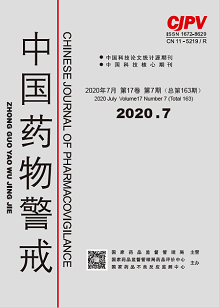|
|
Pharmacologic Mechanism and Safety Risk Analysis of Hydroxychloroquine
WANG Tao, LIU Jicai, PANG Yu
2020, 17(7):
385-388.
DOI: 10.19803/j.1672-8629.2020.07.01
Objective To analyze the safety risk of hydroxychloroquine so as to provide reference for clinical rational use of this drug. Methods The individual adverse drug reaction cases reported by WHO Vigilyze, China adverse drug reaction database, domestic literature and risk management plans of foreign regulatory agencies were analyzed. Results As of April 26, 2020, a total of 28 031 cases of hydroxychloroquine-caused ADRs were reported in the WHO Vigilyze database, 13 498 of which (48.2%) were serious ones. Clinical manifestations included skin rashes, nausea, allergic reactions, pain, joint swelling, fatigue and diarrhea. Between January 2004 and December 2019, 2 506 cases of ADRs associated with hydroxychloroquine sulfate tablets were reported to China adverse drug reaction database, 285 of which (11.4%) were serious, mainly related to skin and appendages disorders, gastrointestinal disorders, neurological disorders, vision disorders, and general disorders. The adverse reactions were mainly manifested as rashes, itching, dizziness, headache, nausea, abnormal vision, diarrhea and vomiting. Conclusion Attention should be paid to the possible adverse reactions caused by hydroxychloroquine in clinical use, such as cutaneous damage, gastrointestinal disorders, neurological disorders, visual damage and cardiovascular diseases. We should reinforce the safety monitoring of hydroxychloroquine, with special attention to such adverse reactions as cardiac toxicity, in order to promote the rational application of this medicine.
References |
Related Articles |
Metrics
|
